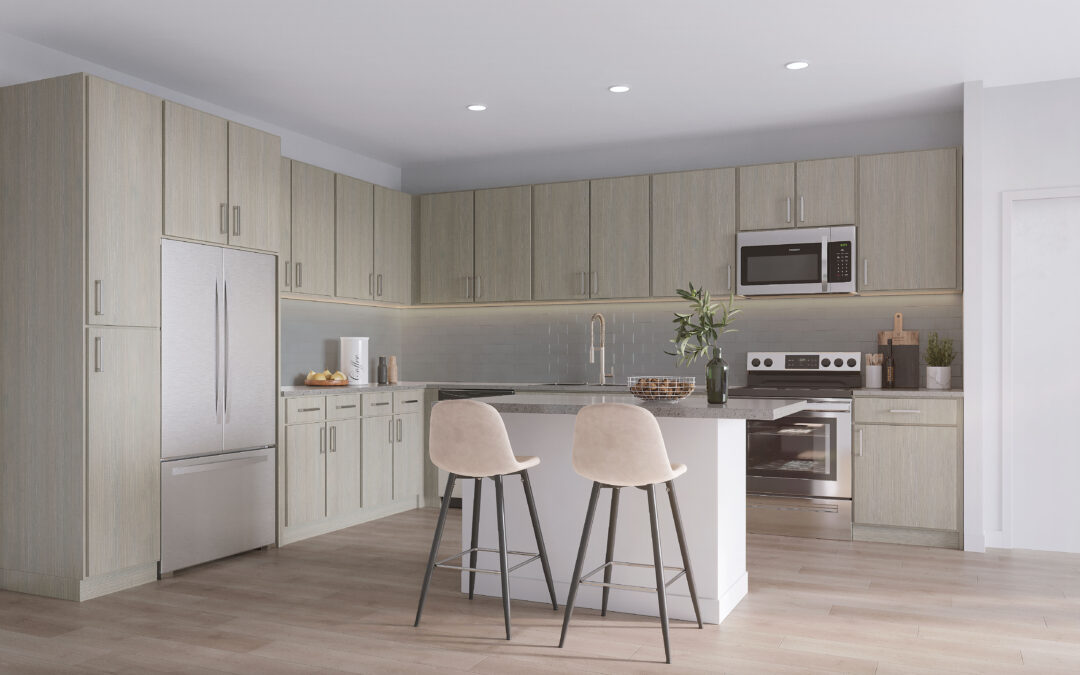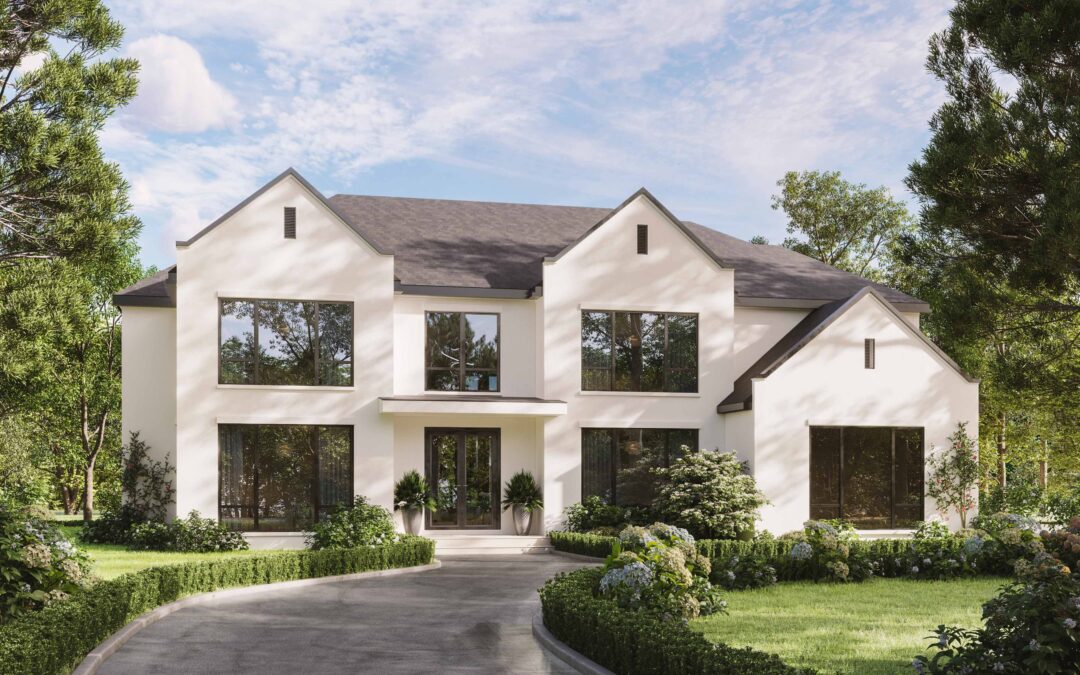
Architectural Visualization V-Ray or Corona
Which Rendering Software is Right for Architectural Visualization?
Architectural visualization is more than just presenting a design, it’s about creating an experience that allows clients, investors, and buyers to see and connect with a project before it’s built. At Radical Galaxy Studio, we’re often asked which rendering software we use. The answer? It depends on the project’s needs and workflow requirements.
For virtual reality and real-time visualization, we rely on Unreal Engine. When it comes to high-end still imagery, our primary tools are 3ds Max, V-Ray, and Corona, alongside Substance Painter, Photoshop, After Effects, Houdini, and Nuke. Each software plays a critical role in our process, but the decision between V-Ray and Corona comes down to factors like hardware compatibility, workflow efficiency, and project scope.
In this guide, we’ll break down the key differences between V-Ray and Corona to help you determine which tool best suits your architectural visualization needs.
Hardware Considerations: CPU vs. GPU Rendering
Rendering is a hardware-intensive process, and your choice between V-Ray and Corona can often come down to how your firm’s workstations are configured.
CPU Rendering: The Strength of Both V-Ray and Corona
Both V-Ray and Corona are powerful CPU-based renderers, meaning they take full advantage of multi-core processors. If your firm has invested heavily in high-performance CPUs, both tools will deliver exceptional results for high-quality still imagery.
Corona’s engine is particularly optimized for ease of use, allowing artists to produce photorealistic results with minimal manual adjustments. This makes it an excellent option for firms prioritizing speed and efficiency over deep customization.
GPU Rendering: V-Ray’s Competitive Edge
If your firm is shifting toward a GPU-based workflow, V-Ray is the clear winner. While Corona currently does not support GPU rendering, V-Ray provides both CPU and GPU rendering options, offering flexibility for firms equipped with NVIDIA RTX graphics cards.
GPU rendering can significantly reduce render times, making it a great choice for animations and real-time rendering. However, GPU rendering does have limations, including memory constraints and less optimized global illumination. Despite these challenges, many firms prefer GPU acceleration for faster production pipelines.
Software Compatibility: Which Rendering Tool Fits Your Pipeline?
The rendering software you choose should integrate seamlessly with your existing design tools.
For firms using 3ds Max or Cinema 4D, both V-Ray and Corona offer smooth integration. However, if your team relies on Maya, SketchUp, or Revit, V-Ray is the preferred choice, as Corona does not yet support these platforms.
Unreal Engine users will also find V-Ray’s interoperability more advanced, especially when working with real-time visualization and virtual reality. While Corona may expand compatibility in the future, firms using SketchUp or Revit will benefit from V-Ray’s broader industry support, making it the better long-term investment.
Workflow & Rendering Speed: Which Software is More Efficient?
Every architectural visualization firm has a unique workflow, and the choice between V-Ray and Corona depends on how much manual control vs. automation your team requires.
Corona: Speed & Simplicity
Corona is built for artists who prefer an intuitive and streamlined workflow. Its real-time interactive rendering provides immediate feedback, making it easy to experiment with lighting, textures, and materials without long wait times.
Additionally, automatic denoising and light adaptation allow for fast, high-quality renderings with minimal tweaking. If your goal is to generate photorealistic still images quickly, Corona is an excellent choice.
V-Ray: Ultimate Control & Customization
For firms that require fine-tuned control over every aspect of rendering, V-Ray is the superior option. Its comprehensive lighting, shading, and material toolset allows for highly detailed customization.
V-Ray’s extensive settings enable precise control over shadow depth, reflection accuracy, and object-specific rendering, making it ideal for projects that demand a high level of realism and fine adjustments. If your firm specializes in detailed architectural visualizations, V-Ray’s depth of control will be a valuable asset.
Why V-Ray Excels in Animation & Motion Rendering
For still renderings, both V-Ray and Corona deliver outstanding results. However, when it comes to animated sequences, walkthroughs, and cinematic motion rendering, V-Ray is the superior choice due to its advanced feature set.
Why V-Ray is the Better Choice for Animation:
- Advanced motion blur and depth of field effects for realistic animation.
- Stable performance in high-poly scenes, ensuring smooth, frame-by-frame rendering.
- Optimized for animations, with better memory handling and efficiency.
- Seamless integration with animation software like Maya and Unreal Engine.
While Corona is an excellent tool for still images, V-Ray’s ability to handle dynamic motion, complex lighting shifts, and cinematic rendering effects makes it the industry standard for architectural animations and motion graphics.
industry standard for animation-heavy projects.
Final Verdict: Which Rendering Software is Best?
When to Choose Corona:
If you’re looking for a simple, artist-friendly workflow, Corona is an excellent choice. Its intuitive interface allows for quick, photorealistic results without the need for extensive parameter tweaking. Many firms using 3ds Max or Cinema 4D prefer Corona because it seamlessly integrates into their existing pipeline.
For firms that focus primarily on still renderings, Corona provides real-time interactive rendering, making it easy to experiment with lighting and textures. If your team values speed and ease of use over deep customization, Corona is a strong contender.
When to Choose V-Ray:
If you need total control over every aspect of your render, V-Ray is the clear winner. Its advanced settings for lighting, materials, and post-processing allow for a level of customization that Corona doesn’t offer. Firms working on architectural animations, walkthroughs, and motion graphics will also benefit from V-Ray’s optimized motion blur and frame-by-frame rendering efficiency.
Additionally, if your workflow involves software like SketchUp, Revit, or Unreal Engine, V-Ray is the only option that fully integrates with these platforms. For firms needing both CPU and GPU rendering capabilities, V-Ray provides the flexibility to choose based on project demands.
At Radical Galaxy Studio, we use both V-Ray and Corona depending on the project scope. Our expertise in both tools allows us to tailor our workflow to deliver the best possible visualization for our clients—whether it’s an ultra-realistic still render or a cinematic architectural animation.
About Radical Galaxy Studio
Radical Galaxy Studio, an award-winning top visualization studio with offices in New York City and the Seattle area. Their accolades are a testament to their unparalleled prowess in translating intricate design concepts into tangible, resonant visuals. Serving a diverse clientele exposes them to a rich tapestry of architectural styles and challenges. Their unwavering commitment to authenticity is apparent in every project. The studio’s dynamic synergy – a blend of tech enthusiasts and artistic visionaries, ensures that each creation embodies precision and aesthetic excellence. As the architectural landscape continues its relentless evolution, Radical Galaxy Studio, fortified by its blend of technology, artistry, is positioned to remain at the forefront, continually redefining industry standards.





